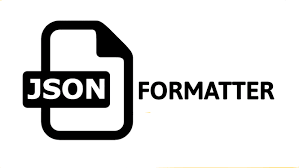JSON Formatter

JSON Formatter: Make Your JSON Clean, Readable, and Debug-Friendly
In the fast-paced world of modern web development, JSON (JavaScript Object Notation) has become the standard for data exchange between servers and applications. While incredibly powerful, raw JSON data can often be difficult to read, especially when it is minified or unstructured. That’s where a JSON formatter becomes an essential tool for every developer, data analyst, or IT professional.
In this article, we’ll dive into what a JSON formatter is, why it’s important, and how to use it effectively for better productivity and cleaner code.
What is a JSON formatter?
A JSON formatter is a simple yet powerful tool designed to take raw, unformatted JSON data and convert it into a structured, human-readable format. It indents the code properly, adds spacing, and organizes the keys and values so that the JSON structure is easy to understand.
In essence, a formatter makes your JSON “pretty” and readable, which helps you debug faster, understand nested structures better, and avoid syntax errors during development.
Why Use a JSON Formatter? Here are a few key reasons why developers and professionals use a JSON formatter:
✅ 1. Readability Minified JSON is great for machine performance but nearly impossible for humans to read. A formatter breaks it into structured lines with indentation, making it much easier to scan and comprehend.
✅ 2. Error Detection When JSON is neatly formatted, it’s easier to spot missing brackets, incorrect commas, or unexpected data types. Some formatters even highlight errors instantly.
✅ 3. Debugging Formatted JSON helps developers trace problems in APIs, server responses, or configuration files. This can dramatically reduce the time spent hunting down bugs.
✅ 4. Consistency When working in teams, using this formatter ensures that everyone follows a consistent data structure and style, making collaboration more efficient.
Key Features of a Good Formatter Tool When choosing or building your own formatter (such as through a web tool), here are the essential features to look for:
Real-time formatting of pasted JSON
Error handling with helpful messages
Copy to clipboard functionality
Responsive and clean UI
Offline accessibility (single HTML file solutions are great for this)
Optional: Dark mode or theme customization
Online vs. Offline JSON Formatter There are countless online formatter tools, but depending on your environment, you might prefer an offline version. Developers often work with sensitive data, and using an offline formatter (like a standalone HTML file) ensures security and privacy.
An ideal offline formatter is built using HTML, JavaScript, and Tailwind CSS—all embedded in a single file—so there’s no need for external installations or internet access.
How to Use a JSON Formatter Using a JSON formatter is typically straightforward:
Paste or type your JSON data into the input field.
Click “Format” or wait for automatic formatting.
View the formatted output in a readable structure.
Copy the result to your clipboard or export it as needed.
If there’s a syntax issue, you’ll get a helpful error message indicating what’s wrong.
Who Uses JSON Formatters? While primarily targeted at developers, JSON formatters are also used by
QA testers inspecting API responses
Data analysts reviewing large JSON datasets
Backend engineers debugging server logs
Frontend developers managing config files and mock data
Basically, anyone who works with data in a JSON format can benefit from this simple yet powerful tool.
Final Thoughts A JSON formatter is more than just a convenience—it’s a productivity booster. Whether you’re building APIs, debugging apps, or managing configurations, this tool can save you time, improve accuracy, and reduce errors. With both online and offline options available, there’s a formatter to fit every workflow.
So the next time you find yourself squinting at a wall of unstructured JSON, remember: a JSON formatter is just a click away from making your data clean, readable, and ready for action.